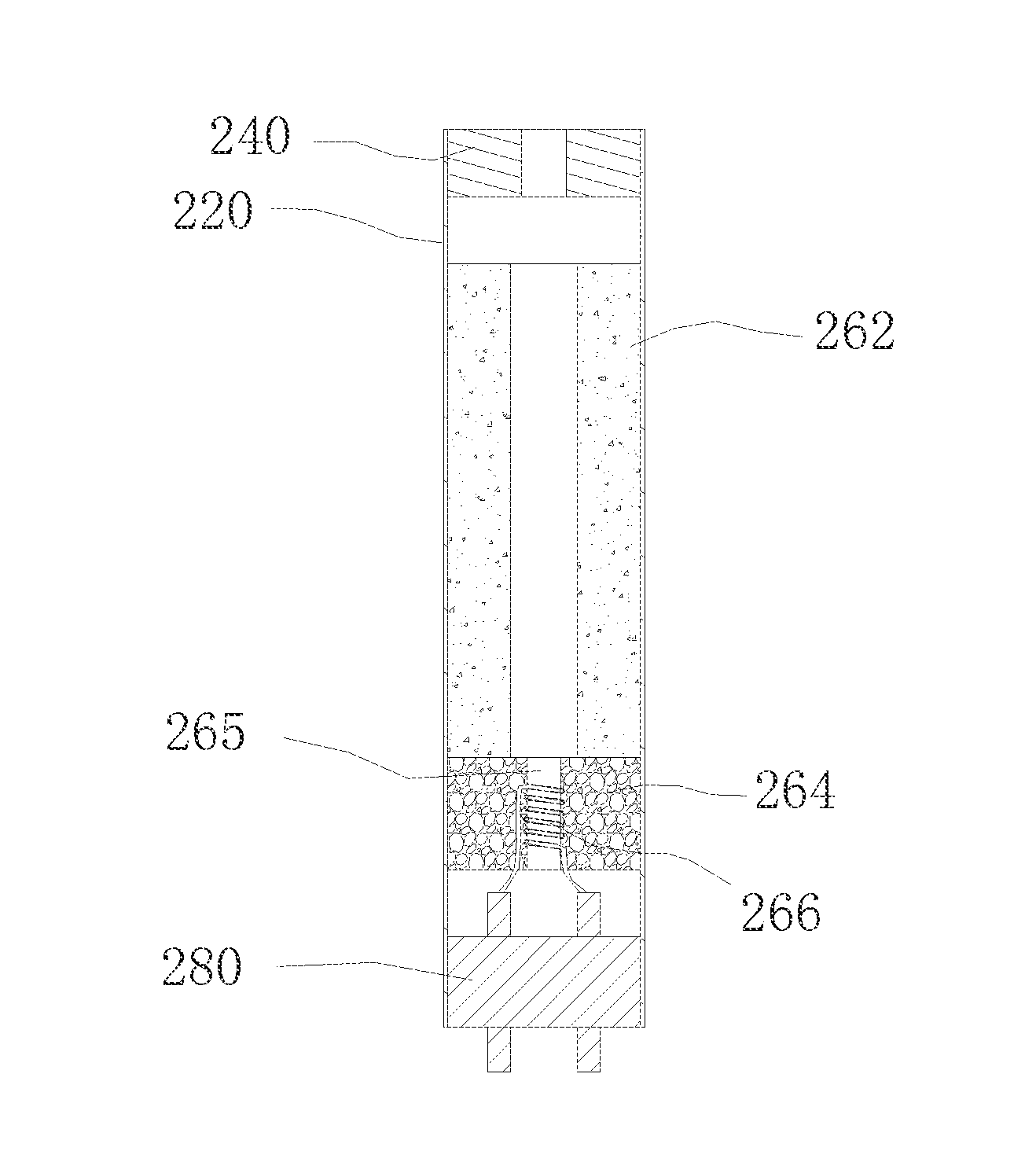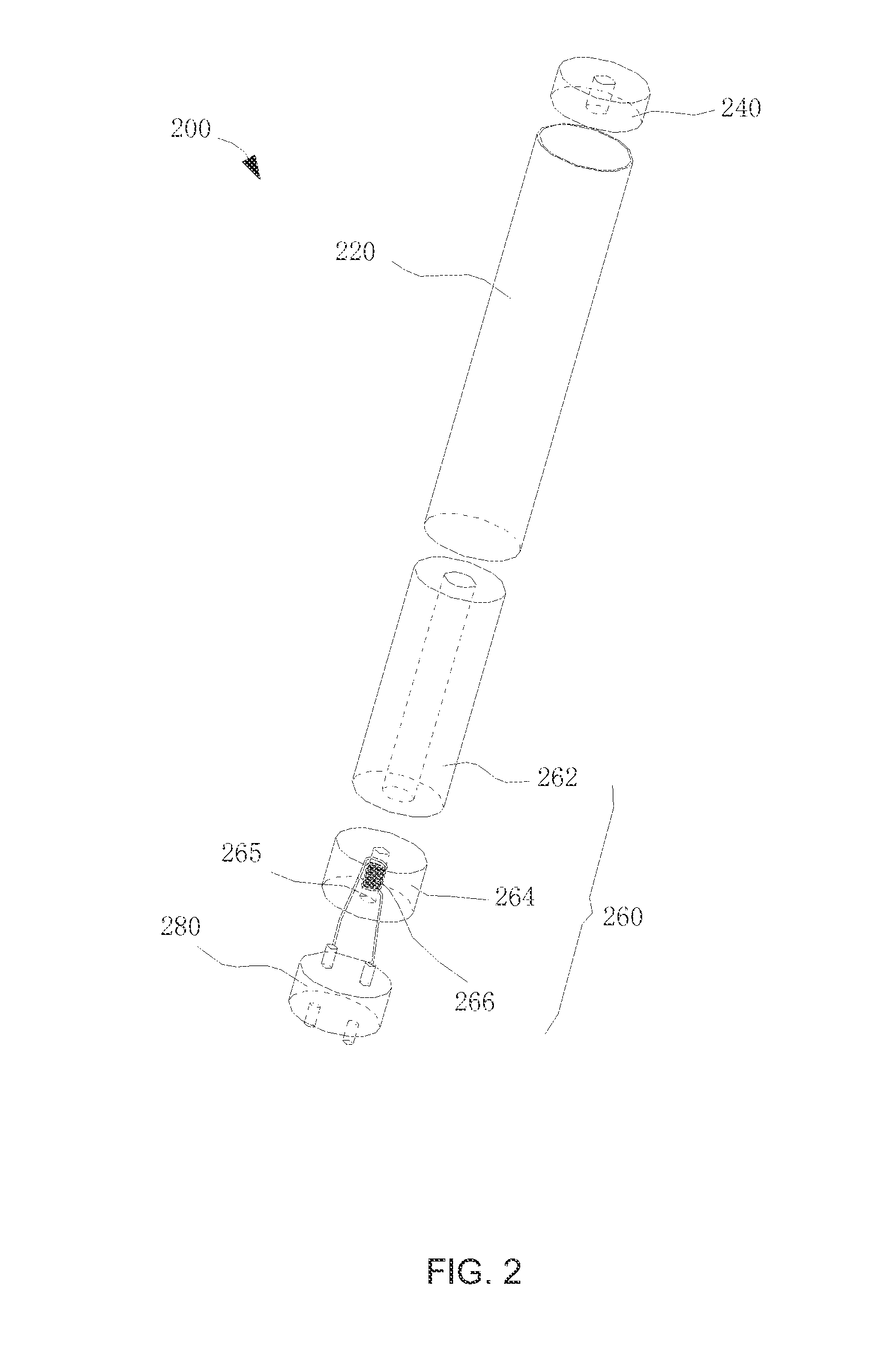Preparation method of porous ceramic, porous ceramic, and electronic cigarette
a technology of porous ceramics and preparation methods, applied in the field of porous ceramic preparation methods, can solve the problems of not being able to apply electronic cigarettes, taking into account both strength and porosity, etc., and achieve the effects of improving the strength of porous ceramics, and reducing the risk of electronic cigarettes
- Summary
- Abstract
- Description
- Claims
- Application Information
AI Technical Summary
Benefits of technology
Problems solved by technology
Method used
Image
Examples
example 1
[0056]80 g of SiO2, 10 g of Al2O3, 10 g of Fe2O3 were weighed and ground by a planetary ball mill for 2 hours. The mixture was sintered in a high temperature furnace at a temperature of 1200° C. for 1 hour. The sintered mixture was ground and passed through a 50-mesh standard sieve to obtain the precursor powder. 90 g of precursor powder and 10 g of wood fiber (porogen) were weighed and mixed with stirring for 30 minutes to obtain a mixed premix, in which a diameter of the wood fiber was 300 μm, and a length of the wood fiber was 1 mm to 3 mm. The premix and the water were mixed according to a mass ratio of 3:1 and stirred for 5 minutes to obtain a semi-moist material, then the semi-moist material was placed into a cylindrical mold and extruded under a pressure of 0.5 MPa to form a desired molded body. The molded body was placed into a resistance furnace, heated to 600° C. with a heating rate of 2° C. / min, and heat preserved for 1 hour to remove the porogen and water. The sample was...
example 2
[0057]98 g of SiO2, 1 g of Al2O3, 1 g of Fe2O3 were weighed and ground by a planetary ball mill for 1 hour. The mixture was sintered in a high temperature furnace at a temperature of 1000° C. for 3 hours. The sintered mixture was ground and passed through a 50-mesh standard sieve to obtain the precursor powder. 60 g of precursor powder and 40 g of starch (porogen) were weighed and ground by a planetary ball mill for 0.5 hour to obtain a mixed premix, in which a particle size of the starch was 20 μm. The premix and the water were mixed according to a mass ratio of 6:1 and stirred for 5 minutes to obtain a semi-moist material, then the semi-moist material was placed into a cylindrical mold and extruded under a pressure of 20 MPa to form a desired molded body. The molded body was placed into a resistance furnace, firstly heated to 200° C. with a heating rate of 1° C. / min and heat preserved for 2 hours, then heated to 600° C. with the same heating rate and heat preserved for 4 hours to ...
example 3
[0058]90 g of SiO2, 5 g of Al2O3, 5 g of Fe2O3 were weighed and ground by a planetary ball mill for 3 hours. The mixture was sintered in a high temperature furnace at a temperature of 1400° C. for 0.5 hour. The sintered mixture was ground and passed through a 50-mesh standard sieve to obtain the precursor powder. 70 g of precursor powder, 20 g of sodium silicate, and 10 g of short fiber (porogen) were weighed and ground by a planetary ball mill for 8 hours to obtain a mixed premix, in which a diameter of the short fiber was 50 μm, and a length of the short fiber was 300 μm. The premix and the water were mixed according to a mass ratio of 3:1 and stirred for 5 minutes to obtain a semi-moist material, then the semi-moist material was placed into a cylindrical mold and extruded under a pressure of 10 MPa to form a desired molded body. The molded body was placed into a resistance furnace, firstly heated to 300° C. with a heating rate of 10° C. / min and heat preserved for 4 hours, then he...
PUM
| Property | Measurement | Unit |
|---|---|---|
| Temperature | aaaaa | aaaaa |
| Temperature | aaaaa | aaaaa |
| Temperature | aaaaa | aaaaa |
Abstract
Description
Claims
Application Information
 Login to View More
Login to View More - R&D
- Intellectual Property
- Life Sciences
- Materials
- Tech Scout
- Unparalleled Data Quality
- Higher Quality Content
- 60% Fewer Hallucinations
Browse by: Latest US Patents, China's latest patents, Technical Efficacy Thesaurus, Application Domain, Technology Topic, Popular Technical Reports.
© 2025 PatSnap. All rights reserved.Legal|Privacy policy|Modern Slavery Act Transparency Statement|Sitemap|About US| Contact US: help@patsnap.com



